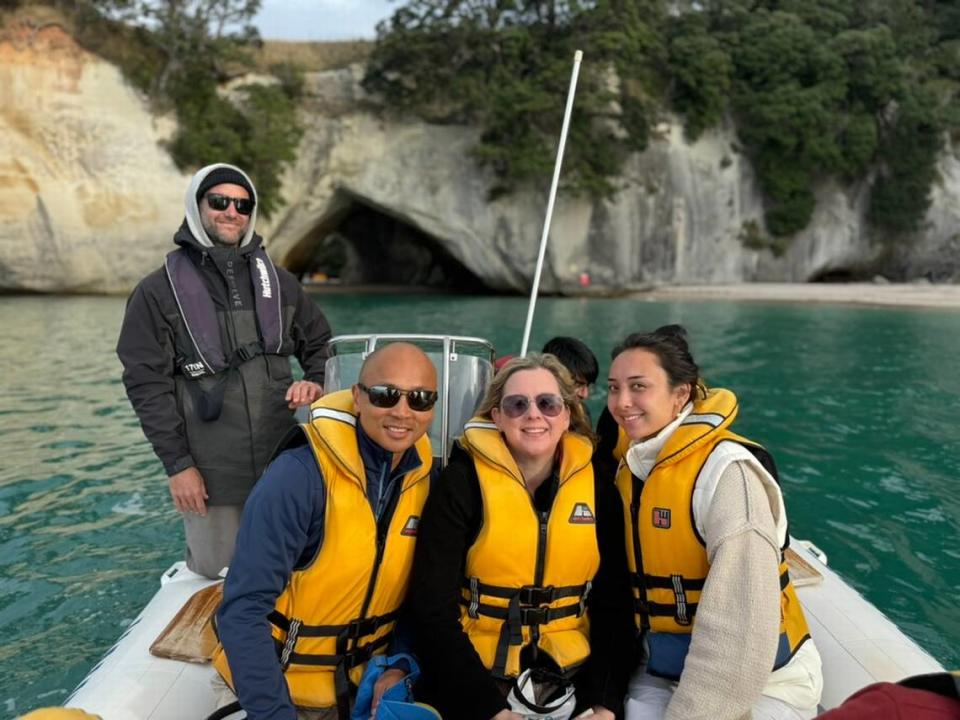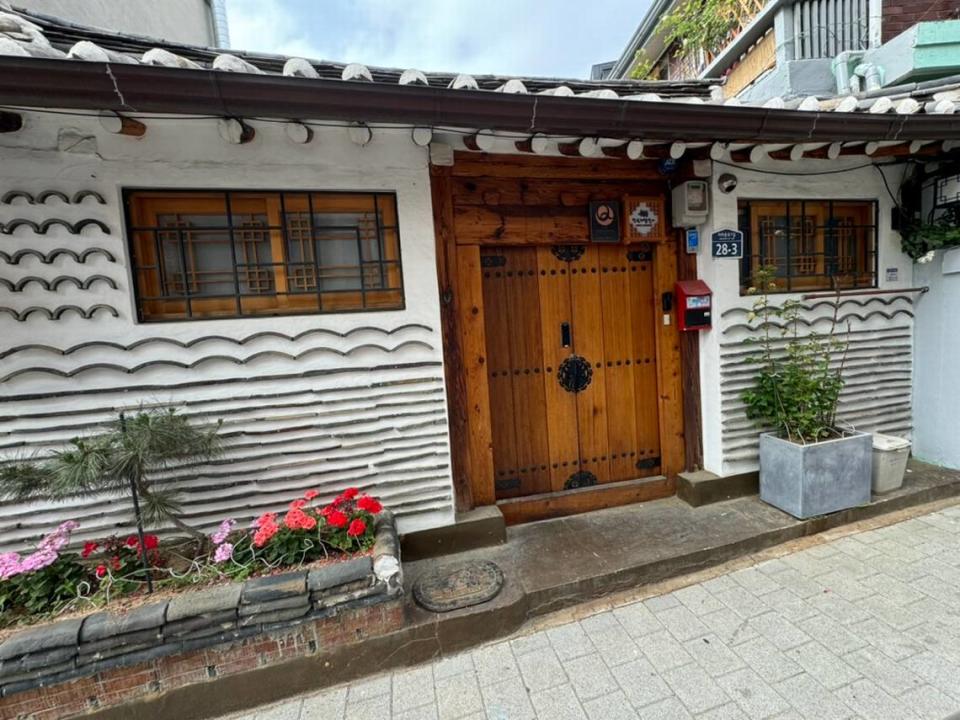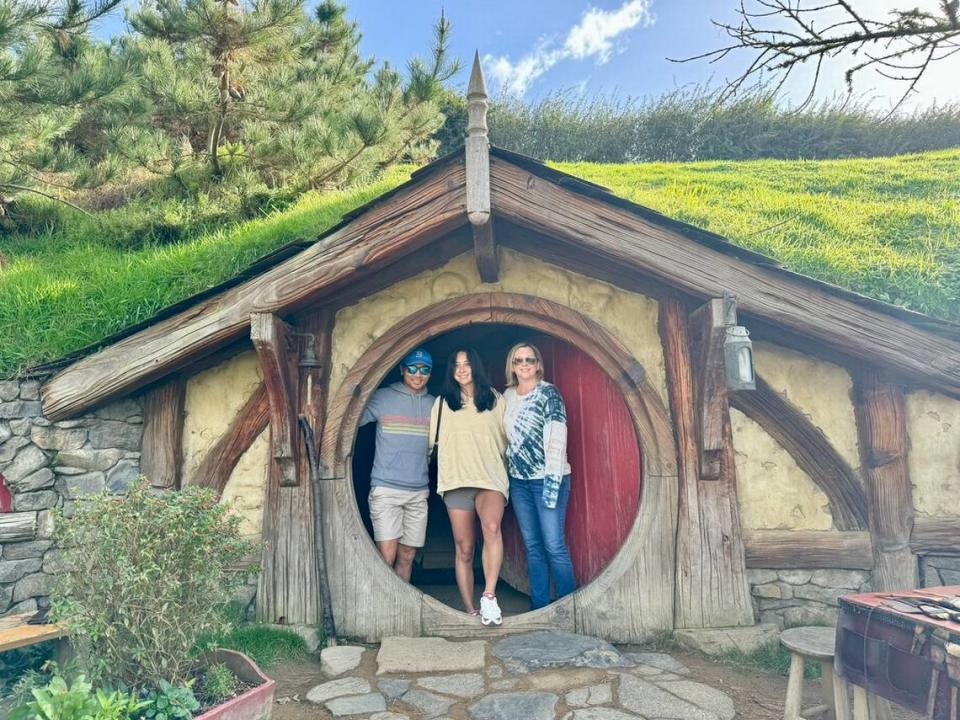I went on a 20-day trip that included Asia and Oceania — and I crushed it. Here’s how.
I’m no stranger to international travel, but this past spring I did find myself in particularly unfamiliar territory as a tourist — having booked back-to-back trips to South Korea (solo, for 11 days including time in the air) and to New Zealand (with family, for nine).
It is, of course, rather unlikely that you’ll book a similar itinerary anytime soon. Or, ever.
So I’m not here to try to help you plan for the same type of trip. But what I can offer are some observations and takeaways from my adventure(s) that if nothing else might be useful food for thought, whether you’re a novice world traveler or someone who gets around the world on the regular.
1. I didn’t pay cash for any of my flights
I’ve been travel-hacking — i.e. aggressively but mindfully exploiting credit cards to earn large amounts of points and miles that can be redeemed for airfare, accommodations and rental cars — for about five years now.
In that time, I’ve used miles to fly to multiple countries in Europe, multiple islands in the Caribbean, Hawaii several times, and all over the continental U.S. I can’t remember the last time I paid cash for a flight.
For this most recent trip, I booked my wife and daughter’s tickets from Charlotte to Auckland, New Zealand and back during a Delta Airlines SkyMiles “flash sale” that I was alerted to by Thrifty Traveler (a paid-subscription service that finds deals for your home airport and delivers them to your email inbox). Round-trip airfare for two, which would have cost at least $3,400 total, rang in at just 91,800 miles. You often need that many miles for one round-trip ticket to Oceania.
As for the solo portion of my trip, it was an anomaly that my ticket from Charlotte to Seoul and my ticket from Seoul to Auckland to go meet my family were paid for by the Korean government (that’s another story); but I did use SkyMiles to get myself home from Auckland on the same flight as my wife and daughter.
I also used points to pay for three nights at a Marriott property in Seoul, one night at a five-star Auckland hotel, and the rental car we had for the week in New Zealand.
Now, I will say that travel-hacking can be hard work. It’s not for the faint of heart, either; I currently have close to 20 credit cards (as well as a credit score over 800, FWIW). But it can be a lot of fun, too. So if you’re unfamiliar, curious, and have the time, the inclination, and the discipline to not use credit cards to spend in a manner you can’t afford, it’s worth exploring the many good online resources available and experimenting with chasing at least one new credit card sign-up bonus to see if travel-hacking is for you.
I think it will always be for me.

2. I saved money on my cellphone bill
Cellphone providers make it so convenient to get service internationally these days that it can be easy to take for granted the luxury of having good, reliable service in most every country you’re likely to want to travel to.
As frequent international travelers may have found out at some point or another, though, this convenience comes with a cost. For instance, if I’m outside of the U.S., my carrier (AT&T) charges $10 for an “international day pass” that basically lets me use my phone just like I do here at home. $10 per person. Per day. Which, obviously, can really add up.
To each their own — convenience can be worth paying for — but in our case, a little research went a long way toward big savings.
While options for workarounds vary by country, I was able to determine that small, rent-able, reliable Wi-Fi devices can be picked up and dropped off inside the airport in Korea, and they’re cheap — the cost for the gadget and unlimited data use for the duration of my trip was about $25 U.S. all-in. (Had I used international day passes, I would have paid $100 for my 10 days on the ground there.) Then in New Zealand, we paid another $25 or so, total, for an e-SIM card and data for my wife’s unlocked iPhone, which my daughter and I just tethered to whenever we weren’t on Wi-Fi. (International day passes for the three of us would have rung up as $210 for our eight days in-country. Oh, and in the simplest terms, an e-SIM lets you change your wireless carrier and service plan digitally/via software.)
Yes, there were four days in Seoul when my portable Wi-Fi unit’s battery died while I was still out and about, forcing me to pivot to the day-pass option (equaling $40 total in charges). Yes, tethering in New Zealand could be cumbersome at times.
But in the end, the math was pretty simple.
Total I would have spent if I’d relied on AT&T’s international day pass each day of the trip? $310.
Total I actually spent? About $90.
3. I stayed outside of my comfort zone
I really don’t mind hotels, especially when they’re free (see above).
I prefer more space, though, so we’re often in Airbnbs or Vrbos, like we were in New Zealand.
[AIRBNB WITHOUT THE FLIGHT: Blue Ridge Mountains home named a top vacation rental in the world.]
What I do tend to avoid, when possible, are “all-inclusive” resorts — because they inherently discourage you from exploring the country you’re in — as well as more-traditional “bed-and-breakfast”-style accommodations, just because I place a high value on privacy when on vacation.
Even so, I decided to try a “B&B” for three of my nine nights in Seoul because I was interested in staying in a hanok, which is basically a traditional Korean house that incorporates architectural elements (symmetry, feng shui, etc.) that are easily identifiable as Asian.

It would mean having present hosts and other houseguests around me. It would also mean inhabiting a room barely big enough for a small mattress; needing to cross an outdoor courtyard to use a tiny bathroom with a shower head attached to the sink; and walls thin enough that I could hear another guest snoring at night.
But while the accommodations weren’t luxurious, they did afford me kind of the antithesis of the “all-inclusive” experience. In other words, instead of feeling more isolated from the foreign country I was visiting, I felt far more immersed in it.
I was in a quiet little urban neighborhood as opposed to a bustling tourist district. During the part of my trip that had me staying at a hotel, my interactions with “locals” involved things like talking to the guy at the front desk or using Google Translate to give my order to the woman at the Starbucks next door. Here, in the hanok, the guesthouse’s co-owner cooked me a traditional Korean breakfast then sat down and talked to me about the schoolteaching career she’d retired from one morning. A couple afternoons later, her husband — a retired city employee turned sometime author — took me out for drinks and stories about life in Korea while we waited for my laundry to get done at a nearby coin-op, since their washer was broken.
Your mileage may vary. Mine will in the future, too. B&B hosts probably won’t always be this warm and welcoming. But in general, I think staying somewhere that has the potential to surprise you for a small portion of any international trip is worth consideration.
If nothing else, you’ll probably get a more interesting story out of it than you will out of staying in a Marriott.
4. I had a fantastic night with strangers
Another quick story from my time in Korea:
Part of the reason I was there was to participate in a three-day program for returning Korean adoptees, and I had made post-program plans with a couple of other participants to take a class in which we would learn to make makgeolli, which is a milky Korean rice wine.
We arrived to find the class had enrolled just two other people, a smiling but clearly introverted young-20-something couple who said they were celebrating having just graduated college by traveling through Asia.
It was a fun hands-on experience, led by a teacher with an interesting backstory (born and raised by first-generation Korean parents in Ecuador, of all places); and — perhaps emboldened by a few generous sample pours of his makgeolli and a sense that these recent college grads possibly hadn’t spent time with anyone but each other for quite a while — I did something I’ve never done before while traveling.
I suggested to my two friends that we invite all three of these strangers out for dinner and drinks.
Since the teacher was the only local, we had him pick the place and do all of the ordering for the six of us. He picked an off-the-beaten-path restaurant we never would have found, and ordered food and drinks we never would have been bold enough to try. By the time a couple of other friends of ours joined the gathering, he was teaching us Korean drinking games and we were all howling with laughter.

Anyway, you can take from this story what you want. But I think what I would say, with confidence, is that occasionally the best, most fun things you can do while traveling can’t be planned, or prepared for, or found in any guidebook.
5. I got bitten by the solo traveling bug
Like I said, I went to Korea solo. But I wasn’t really alone. Because of the program I’d come for, I was with people I knew literally from the time I hit the ground in Seoul.
I did get a little glimpse of true solo traveling, though, in Auckland. And while I adore family vacations and relish exploring new places with my wife and daughter, I have to admit: My 24 hours alone in New Zealand’s capital, they were surprisingly delightful.
There was no debate about where to eat or what to do. I went for a long run in the middle of the afternoon, heading in the direction of ... wherever, just to see where the path along the water took me ... without worrying about anyone waiting for me to get back. If you want to stand and stare at that majestic-looking ferry station and the way the sun is bouncing off it for 10 minutes, have at it. If you want to walk to the end of a very long pier and take dozens of photos and videos of the water and the skyline off in the distance, be your own guest.

When you’re alone, you can practically blend into the city and almost disappear. Time matters to no one but yourself, if it even matters at all. For anyone who always has someone pulling at them and wanting their attention, both professionally and personally, it’s the rarest of luxuries.
All things being equal, I’d still choose traveling abroad with my wife. But I know single people who swear by an occasional solo international trip. I know married people who do, too.
Now I better understand why.
6. I came home with one extra suitcase
I really wanted to do carry-on only for this trip, partly because I didn’t want to lug big pieces of luggage around a busy and imposing city like Seoul, but also because it seemed like a packing challenge.
And I love a good challenge.
Adding to the degree of difficulty? For one, it was spring going into summer in Seoul, and fall going into winter in New Zealand, so I needed to make room for both warm- and cold-weather apparel. Two, the expectation that I’d amass a ton more stuff during my travels.
But I think I came up with a pretty decent plan to enable me to at least depart for a 20-day trip with just a carry-on roller and a backpack small enough to fit under an airplane seat: I utilized packing cubes, I included several older clothing items that I knew could be jettisoned at my destination after wearing once or twice ... and I aimed to buy the cheapest piece of functional luggage I could find on my last day in Seoul to help me get everything home (or in this case, to New Zealand and then home).
The latter trick isn’t always going to be the most practical hack. If you’re going to the Maldives or Monte Carlo, for instance, there’s not going to be any such thing as cheap luggage.
In Seoul, however, there are cheap-luggage shops everywhere in older outdoor markets like Namdaemun, and I was able to find a larger roller for the equivalent of just 35 American dollars — after teaming up with a friend to help me drive a hard bargain with the cheap-luggage-shop guy, who grudgingly caved on his no-credit-card policy and then (even more grudgingly) knocked a whopping $3 off the price.
The suitcase, despite my skepticism, made it to Auckland and then to Charlotte without the wheels falling off.
And now I have a piece of luggage with a story.

7. I made sure to write everything down
The easy way to document trips is to take photos of everything, and doing so can certainly help when you want to look back visually at where you went and what you did.
It’s much, much more time-consuming to try to find time at the end of a busy travel day to write down everything you saw, heard, tasted, smelled and felt as you moved around the places you were visiting. In fact, sometimes a day (or two, or three) would get away from me before I could log my recaps in the Notes app on my iPhone. It did feel a bit more like a chore than I’d feared.
But it’s been less than a month and many of the finer details have already faded from my memory.
While I don’t think I’ll keep a journal every time I travel, I am pretty sure I’ll be glad I did it for a trip as extraordinary — and as full of wonderful surprises — as this one.



